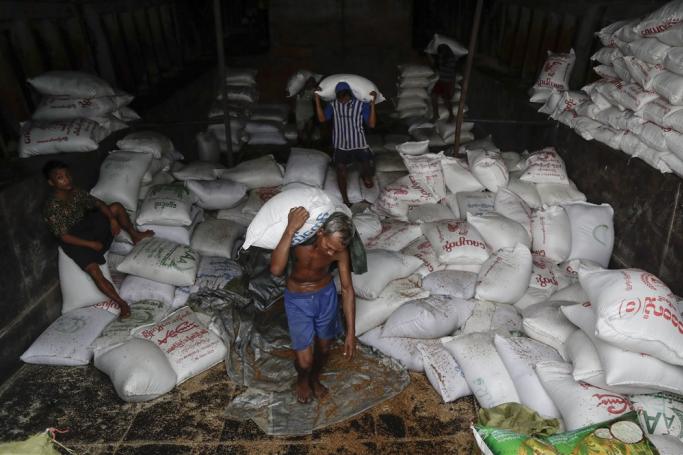Prices of rice in Myanmar are continuing to rise in the wake of Cyclone Mocha as people are hoarding supplies and the export of rice is still permitted.
The price of rice is still at a high level with 120,000 Kyat per bag (50 Kg) for Shwebo Pawsan, 100,000 Kyat per bag for other high-quality rice, and 85,000 Kyat per bag for low quality rice.
Rice merchants say these prices are 30% higher than at the beginning of May.
Moreover, some rice mills reduced their milling capacity because of frequent power outages so that the supply of rice in the market was also reduced, the rice millers said.
The Myanmar Rice Federation (MRF) said that the current prices of rice rose by 30% to 90% compared with prices last year depending on the variety.
Some rice merchants said that the rice price was soaring and chaotic in the market because some merchants were hoarding hundreds of thousands of rice bags and they were being sold at high prices in the market.
The MRF said a rice storage and warehouse registration system will be implemented within a few months to control hoarding and speculation in the market.
MRF will implement this system in which the rice mills, rice merchants and rice retailers must register with MRF if they store more than 50 tonnes of rice or over 5,000 baskets (46 lbs) of paddy in their warehouses.
Neighbouring countries, including Thailand, use this sort of“ National Storage Capacity” system in which rice storage data is accurately recorded.
The Military Council exported 2.26 million tonnes of rice in the last fiscal year 2022-23 and earned US$856 million from rice exports.
The Military Council plans to export 2.5 million tonnes of rice this fiscal year and expects the export revenue to bring in US$1 billion.
Rice acreage and cultivation drastically fell this year as the junta launched their military operations in major rice-growing areas and destroyed many paddy fields and rice cultivation. Some rice merchants
said that the price of rice was soaring in the domestic market as the junta was planning to export more rice, even though rice acreage and production drastically fell.












